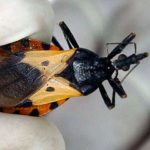Adolescent girls subjected to appearance-related cyberbullying are increasingly experiencing body shame, a desire to change their looks, and developing symptoms of eating disorders, according to new research from the University of the Sunshine Coast (UniSC). The study, published in the Journal of Eating Disorders, sheds light on the alarming link between online bullying and harmful behaviors like extreme dieting and cosmetic surgery among young females.
Taliah Prince, a neuroscience researcher at UniSC’s Thompson Institute and lead author of the study, expressed concern over the prevalence of appearance-related cyberbullying. “Our research found that 98% of adolescent girls surveyed had experienced cyberbullying, with the majority of the abuse focused on their body weight, shape, or physical features,” said Ms. Prince.
The study revealed that 96% of the girls who were victims of appearance-related cyberbullying reported a desire to alter their appearance. Disturbingly, 81% expressed a desire to resort to cosmetic procedures to achieve this.
“These findings are troubling,” Ms. Prince stated, “especially given that eating disorders have the highest mortality rate of all psychiatric disorders among adolescent girls. Body dissatisfaction, which is closely linked to appearance-related cyberbullying, is the leading risk factor for eating disorders.”
The study is believed to be the first to comprehensively investigate the mental health impacts of appearance-related cyberbullying on adolescent girls. Ms. Prince emphasized the urgent need for action, as cyberbullying occurs at a critical time in adolescent brain development, making its victims particularly vulnerable to long-term consequences.
The report calls for increased awareness and intervention from parents, educators, and policymakers. “There needs to be more education on what our young people are exposed to online, targeted interventions, prevention strategies, and stricter controls around social media use. Some adolescents spend up to seven hours a day on digital devices,” Ms. Prince explained.
She also highlighted the importance of teaching digital literacy to help teenagers navigate the online world safely. “We must teach our young kids how to process the content they encounter, how to report harmful behaviors, and how to protect their mental health in a digital world,” she said.
To further explore the impact of appearance-related cyberbullying, Ms. Prince is turning her attention to its neurobiological effects on adolescent girls. “While neuroscience in this area is relatively new, we know there is a significant gap in research, particularly in real-time responses to cyberbullying in adolescents,” she noted.
The study’s findings have brought critical attention to the growing problem of appearance-based bullying online, highlighting the need for immediate preventive measures to safeguard the mental and physical well-being of vulnerable teens.
Reference:
Taliah Prince et al, Appearance-related cyberbullying and its association with the desire to alter physical appearance among adolescent females, Journal of Eating Disorders (2024). DOI: 10.1186/s40337-024-01083-z












